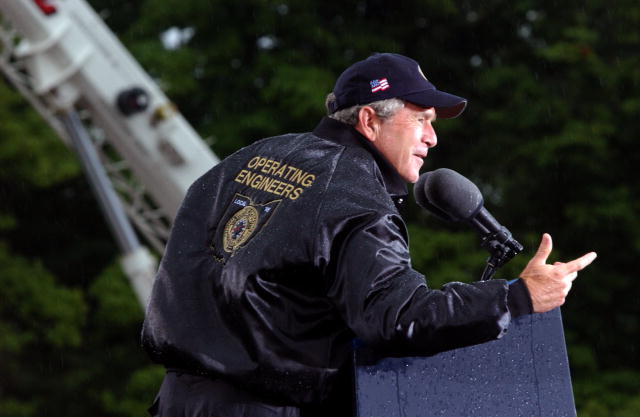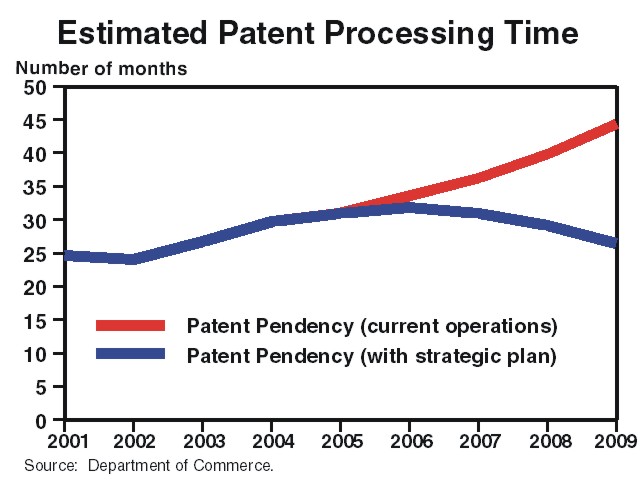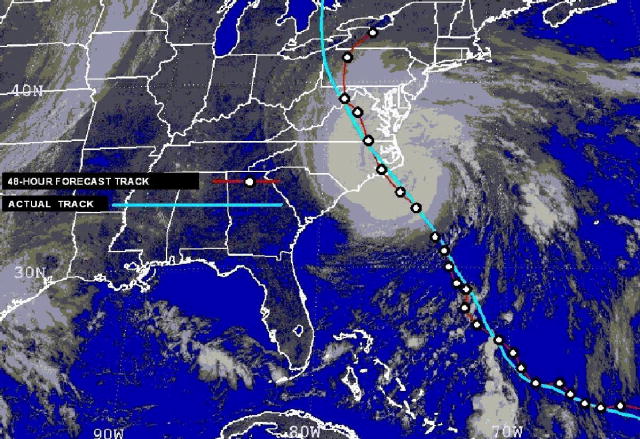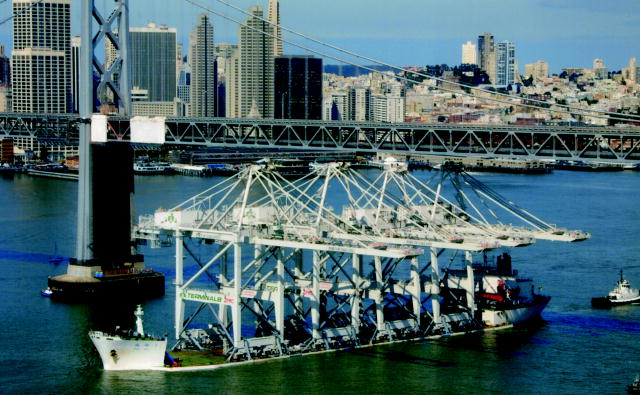 |
||||||
|
||||||
| |||||||||||||||||
|
|
|||||||||||||||||
 |
The Department of Commerce helps foster economic growth and environmental stewardship. It accomplishes these missions by promoting technological innovation; gathering and developing economic and demographic statistical data used by the public and private sectors; pursuing open and fair international markets and helping U.S. firms and consumers benefit from them; issuing patents and trademarks that reward innovation; developing and setting new industrial standards and performing valuable scientific research; forecasting the weather to benefit public safety and aid environmental policy; and promoting environmental safeguards for the oceans and coasts, including stewardship of ocean fisheries. These missions are reflected in Commerce’s three strategic goals:
Provide the information and tools to maximize U.S. competitiveness and promote economic growth for American industries, workers, and consumers;
Foster scientific and technological leadership by protecting intellectual property, enhancing technical standards, and advancing measurement science; and
Observe, protect, and manage the Earth’s resources to promote environmental stewardship.
Commerce’s three strategic goals form the basis of the 2005 Budget request.
The Budget supports Commerce’s work in improving the statistics that describe the U.S. economy and in promoting fair competition in international trade.
To foster economic and job growth in the United States, businesses need to make technological advances. This Budget supports increases for the Patent and Trademark Office (PTO) and the National Institute of Standards and Technology’s (NIST) core program to improve the quality and timeliness of their products and services to preserve U.S. technological leadership.
Public safety and economic growth depend on accurate weather and marine information. Our Nation’s fisheries are both an environmental resource and an economic resource that require sound management and stewardship to promote the public’s interest. The Budget supports the efforts of the National Oceanic and Atmospheric Administration (NOAA) to enhance the quality of weather information and improve fisheries management.
The President’s Budget proposes to strengthen core statistical programs and to realign efforts in international trade and economic development.
The Bureau of Economic Analysis (BEA) develops economic statistics that are critical to understanding the U.S. economy. For example, BEA provides quarterly estimates of the Gross Domestic Product, a closely-watched measure of the performance of our Nation’s economy. Reflecting BEA’s effective rating in the Program Assessment Rating Tool (PART) analysis, the Budget requests an additional $15 million to continue to improve the timeliness and quality of BEA’s economic data.
 |
The Census Bureau collects, tabulates, and distributes a wide variety of statistical information about Americans and the economy, including the constitutionally mandated decennial census. The Budget proposes a $180 million increase to continue improvements to the design of the 2010 census and the information it provides. The Bureau has improved the coverage accuracy of the census over time; however, the costs of conducting each census have risen sharply. The Bureau is reengineering the 2010 census to further improve coverage accuracy, contain costs, and provide more timely “long-form” data. Funding increases will be used for early planning and testing; continued improvements in address and geographic information; and full implementation of the American Community Survey to provide long-form data on an on-going basis, rather than waiting for once-a-decade censuses.
The International Trade Administration (ITA) assists in the creation of U.S. jobs by aiding the growth of export businesses. It also ensures international trade is fair for U.S. workers and businesses by enforcing U.S. trade laws and agreements, and improving access to overseas markets by identifying and pressing for the removal of trade barriers. This Budget provides ITA an $11 million increase for international trade activities.
Throughout 2003, Secretary Evans and other senior Commerce officials consulted with American manufacturers through a series of nationwide roundtables to discuss the challenges and job losses facing the industry. On Labor Day 2003, President Bush outlined the key findings of these roundtables. In response to these challenges, this Budget reflects the following changes at the Department of Commerce: creating a new Assistant Secretary to serve as a leader within the Administration on manufacturing; creating a new Assistant Secretary for Trade Promotion to boost exports, particularly to those markets that U.S. negotiators have recently opened, like China; and establishing an Unfair Trade Practices Team to track, detect, and confront unfair competition before it injures an industry here at home. ITA continues to develop and implement the President’s National Export Strategy, including the International Trade Process Streamlining Initiative. This Presidential E-Government effort provides U.S. companies better access to trade-related market research and export services information at www.export.gov.
The Bureau of Industry and Security regulates the export of sensitive goods and technologies and helps U.S. industry comply with international arms control agreements. The Budget provides $9.5 million to: 1) enhance the enforcement of license conditions; and 2) implement a more effective system of dual use export controls that better protect U.S. national and economic security.
The Economic Development Administration’s (EDA) mission is to promote a favorable business environment in economically depressed communities, principally through infrastructure investments. The Budget proposes sustained funding for EDA to continue to encourage private enterprise, job creation, and economic growth in the Nation’s most distressed communities. The Budget proposes an additional $6 million for the Minority Business Development Agency to continue to strengthen partnerships with the private sector and other Federal, State, and local entities that help promote the growth of minority businesses.
The 2005 Budget strengthens key Commerce programs so that U.S. workers and businesses can maintain their technological edge in world markets.
PTO issues patents and registers trademarks. It also works to protect U.S. intellectual property right holders around the world through international treaties and enforcement training programs.
As the U.S. economy depends increasingly on protection of intellectual property, PTO must efficiently and accurately process patent and trademark applications. In the past few years, however, PTO has experienced a growing backlog of patent applications and has struggled to meet performance goals. To address these challenges, the agency developed a far-reaching strategic plan in 2002 to improve quality and reduce the time required to process patents and trademarks. The first PART assessment on PTO, conducted for the 2004 Budget, supported the strategic plan initiatives as a mechanism to improve performance. As part of the strategic plan, the 2004 Budget included legislation to increase and restructure PTO’s fees to enable the agency to meet its workload problems. The efforts to modernize and strengthen the PTO are also important parts of the President’s Manufacturing Initiative to improve the competitiveness of U.S. manufacturers.
This Budget supports the fee legislation and a spending level of $1.5 billion that will allow PTO to continue implementation of its strategic plan. This proposal provides PTO full access to its fee collections in 2005.
PTO expects to meet the following performance targets with its 2005 funding and initial implementation of strategic plan initiatives:
Reduce its error rate from 4.4 percent in 2003 to 3.7 percent in 2005 for patents, and from 5.3 percent in 2003 to 4.5 percent in 2005 for trademarks;
Receive 10 percent and manage 90 percent of patent applications electronically by 2005, and receive 70 percent and manage 100 percent of trademark applications electronically by 2005; and
Achieve complete review of patent applications in an average of 26.9 months by 2009, and complete review of trademark applications in an average of 20.7 months by 2009.
 |
PTO’s strategic plan and proposed fee structure should help reduce the time required for a complete review of patent applications (or patent pendency) by processing patent applications electronically and redesigning the patent search and examination system. Without these changes, patent pendency may rise to 45 months by 2009. Implementation of the strategic plan and enactment of the fee legislation should result in 27 month pendency in 2009.
PTO’s 2005 funding will cover the full accruing retirement costs of its employees, as well as the hiring of 900 new patent examiners and investments in E-Government to process patents electronically.
The Budget provides increased funding for NIST laboratories in order to meet Commerce’s challenge of promoting state-of-the-art industrial standards that support technological innovation. NIST laboratories specialize in electronics, manufacturing, engineering, chemical science, physics, materials science, building and fire research, and information technology. The upgrade to NIST’s lab facilities continues with $31 million to equip and operate the Advanced Measurement Laboratory, a new facility designed to meet cutting edge research requirements, and $25 million for continued renovations of NIST’s Boulder, Colorado facilities. The fundamental scientific research and advanced facilities capabilities of NIST support the innovation priorities of the interagency National Nanotechnology Initiative at $53 million and Networking and Information Technology Research and Development (R&D) at $33 million. The Budget provides funding for NIST’s ongoing research efforts in homeland security standards development related to biometric identification, threat detection, and high-rise safety. These activities will provide more accurate identification of individuals seeking to enter the United States, improve the capability to detect nuclear and radiological weapons and help prevent smuggling of these weapons across our borders, and update building and fire standards along with operational guidance for building owners and emergency responders.
Consistent with the Administration’s emphasis on shifting resources to reflect changing needs, the 2005 Budget proposes to terminate the Advanced Technology Program (ATP). The Administration believes that other NIST research and development programs are much more effective and necessary in supporting the fundamental scientific understanding and technological needs of U.S.-based businesses, American workers and the domestic economy. Further, large shares of ATP funding have gone to major corporations that do not need subsidies. Finally, ATP-funded projects often have been similar to those being carried out by firms not receiving such subsidies.
The 2005 Budget maintains the 2004 level of funding for the Manufacturing Extension Partnership (MEP). MEP was designed to demonstrate how to provide information and consulting services to help businesses adopt advanced manufacturing technologies and business practices, and to transfer these methods, activities and functions to the private sector. MEP was originally intended to be comprised of 12 federally supported centers, with Federal funding ending after six years. In its 15 years of operation, the program has expanded away from this original design to include 400 locations, and the Congress has removed the sunset provision. Given advances in manufacturing and technology, it is appropriate to evaluate MEP operations and take steps for continuous improvement. The Administration proposes to coordinate MEP fully with other Commerce Department programs that are helping manufacturers to be more competitive and expand markets.
The Budget continues to strengthen the spectrum management capabilities of the National Telecommunications and Information Administration by providing funding for laboratory upgrades, and spectrum management and research in support of the Administration’s Spectrum for the 21st Century Initiative. In addition, the Administration will again propose legislation to streamline the current process for reimbursing Federal agencies that must relocate from spectrum auctioned to commercial users. Additional telecommunications legislation is discussed in the Federal Communications Commission section in the Other Agencies chapter.
The Budget provides no funds for Public Telecommunications Facilities, Planning and Construction grants. This program has recently targeted most of its funding toward the purchase of digital transmission equipment by public broadcasting stations. The Budget proposes that a portion of the Corporation for Public Broadcasting’s already enacted 2005 funding be made available for this purpose.
Accurately predicting storm and other weather events and tracking changes in the climate over time are important to public safety, environmental safety, and averting economic losses. This Budget funds the high-priority, core activities of NOAA, including efforts to improve severe-storm forecasts, the satellite infrastructure needed for weather and climate prediction and research, and fisheries and ocean programs. In addition, funding is provided to address maintenance and safety issues associated with NOAA facilities, vessels, and aircraft.
 |
Last fall, Hurricane Isabel paralyzed the East Coast, shutting down schools and offices and damaging hundreds of homes and businesses. The National Weather Service (NWS) accurately predicted the path of the hurricane from off-shore and landfall through dissipation over West Virginia and Pennsylvania. Thanks to the NWS, local officials had time for emergency preparations to save lives and minimize damage, and evacuation warnings could be targeted to minimize costs and inconveniences.
Every year, hundreds of lives and billions of dollars are lost due to severe storms, floods, and other natural disasters. NOAA’s National Weather Service (NWS) aims to minimize these impacts through improved weather warnings and forecasts. In recent years, NWS has demonstrated strong performance during key weather events. Last fall, the preliminary 48-Hour Forecast Track Error for Hurricane Isabel was only 61 nautical miles, significantly less than the average error of 130 nautical miles. Because of NWS’s record of success, the Budget provides a boost to further increase lead times and to improve the accuracy of the warnings. The Budget also includes an increase for NOAA’s satellite programs, which provide irreplaceable data that are essential for weather and climate prediction and environmental monitoring.
In support of the Administration’s newly released Climate Change Science Program (CCSP) Strategic Plan, the 2005 Budget includes an additional $19 million for NOAA to expand climate observing capabilities. These activities will contribute to reducing scientific uncertainty in three key areas identified in the CCSP plan: 1) effects of aerosols; 2) atmospheric and oceanic interactions, and 3) carbon sources and sinks. This funding is one component of a Government-wide initiative, which provides $103 million over two years for accelerated climate observing activities and research. The Administration will continue to work with the international community to develop a comprehensive, global earth observation system.
This Budget continues steps to improve the effectiveness of management actions by NOAA’s National Marine Fisheries Service. Currently, about 17 percent of major fisheries stocks are known to be over-fished, and stock levels are unknown for another 38 percent. While more than 80 percent of the over-fished stocks are currently under rebuilding plans, rebuilding long-lived stocks can take decades. Over the last decade, several fisheries have “collapsed” and, as a result, there has been a rise in fishing moratoria, lawsuits, and Federal payments to support affected fishermen and fishing-dependent communities.
The 2005 Budget sustains the focus on core activities, such as fisheries science and stock assessments, which will improve the management and economic sustainability of the Nation’s fisheries and enhance protection of endangered species. In addition, the Budget supports the 2004 proposal to reauthorize the Magnuson-Stevens Fisheries Conservation and Management Act, including the authority to establish individual fishing quota systems. Providing market-based incentives and redirecting funds to meet the highest priority fishery management needs will enhance sustainability and improve the livelihood of fishermen who depend on these resources.
With the management changes and funding proposed in the President’s Budget, NOAA expects to be able to reduce the number of over-fished major fisheries by two by the end of 2005 and by 12 by the end of 2009. A greater effect will be felt in the number of sustainable fisheries, as stock levels improve and stocks with unknown population status are evaluated. The status of an additional 11 stocks should be determined by the end of 2005, and an additional 19 stocks by 2009.
Restoration of endangered salmon stocks is important for environmental quality, Native American communities, commercial and recreational fishermen, and the economic vitality of the Pacific Northwest. This Budget provides $100 million for the Pacific Coastal Salmon Recovery Fund to assist States, Tribes, and local governments with thousands of projects that benefit Pacific salmon in Washington, Oregon, California, Idaho, and Alaska. This represents a $10 million increase over 2004. This Budget also seeks more accountability in the use of these funds, consistent with last year’s PART analysis, which found that results could not be demonstrated due to a lack of performance measures.
 |
Accurate nautical charts and water level information are essential for maintaining safe and efficient maritime commerce. The 2005 Budget increases NOAA’s capacity to provide state-of-the-art electronic nautical charts to both commercial and recreational boaters. In addition, the Budget invests in data collection platforms to monitor coastal water levels. This information is used on a daily basis to improve the efficiency of U.S. port operations. Climate change researchers are also interested in the trends of these observations over time, as well as the information they provide in severe weather events.
The Budget continues to focus on improving program performance. Fourteen Commerce programs were assessed using the Program Assessment Rating Tool (PART), which evaluated the programs’ design and purpose, strategic planning efforts, how well they are managed, and whether they are generating positive results for taxpayers. Below are some of the highlights and recommendations from the PART evaluations. For further details on Commerce’s performance assessments, see the White House budget website at www.whitehouse.gov/omb/budget/.
| Program | Rating | Explanation | Recommendation |
|---|---|---|---|
| NIST Labs | Effective | The program is well managed and effectively conducts fundamental R&D and industrial standards development. | The Budget funds improvements to facilities and infrastructure and prioritizes nanotechnology, information technology (IT), and manufacturing technology. |
| NOAA: Mapping and Charting | Moderately Effective | The program demonstrates progress in meeting goals, but contains design flaws that limit cost-effectiveness. | The Budget supports modest expansion of Electronic Navigation Charts. |
| Census: Decennial Census | Moderately Effective | The 2000 census was highly accurate, but was conducted at great cost. | The Budget funds significant activities to redesign the 2010 census to simplify data collection and contain cost. |
| ITA: U.S. and Foreign Commercial Service (USFCS) | Adequate | The program does not adequately recover the cost of its services through fees. | The Budget supports work to develop a cost-accounting system to provide better information about the full cost of USFCS services. |
| NOAA: Coastal Zone Mgmt Grants | Results Not Demonstrated | The program does not have measures to demonstrate performance in improving the condition of the Nation’s coasts. | The Budget reprioritizes grant funding to other NOAA programs that are better able to demonstrate results. |
The table below provides an update on the Department of Commerce’s implementation of the President’s Management Agenda as of December 31, 2003.
| Human Capital | Competitive Sourcing | Financial Performance | E-Government | Budget and Performance Integration | |
|---|---|---|---|---|---|
| Status | |
|
|
|
|
| Progress | |
|
|
|
|
| Efforts to optimize Commerce’s workforce structure are ongoing, with Commerce utilizing Voluntary Early Retirement Authorities and Voluntary Separation Incentive Payments to facilitate restructuring, reorganizing and delayering. Although accomplishments in competitive sourcing are not as progressive as originally proposed, Commerce has, to date, completed competitions for seven percent of its commercial inventory. Commerce is revamping its program to focus on institutionalizing competitive sourcing as a management tool. The Department completed deployment of the Commerce Administrative Management System, thereby meeting requirements for an integrated financial system for the first time, and is working to address remaining compliance issues. Commerce has made strong progress in E-Government by improving information technology security for all of its systems. In addition, Commerce has completed PARTs for nearly two-thirds of its programs. | |||||
| Actual | Estimate | ||||
|---|---|---|---|---|---|
| 2001 | 2003 | 2004 | 2005 | ||
| Spending | |||||
| Discretionary Budget Authority: | |||||
| Departmental Management: | |||||
| Salaries and Expenses | 40 | 49 | 47 | 56 | |
| Emergency guaranteed loan program accounts | -115 | -1 | — | -35 | |
| Undistributed reductions | — | — | -18 | — | |
| Office of the Inspector General | 20 | 21 | 21 | 22 | |
| Subtotal, Departmental Management | -55 | 69 | 50 | 43 | |
| Economic Development Administration | 449 | 320 | 310 | 321 | |
| Bureau of the Census | 429 | 551 | 612 | 828 | |
| Economic and Statistics Administration | 54 | 72 | 73 | 88 | |
| International Trade Administration | 345 | 417 | 332 | 394 | |
| Bureau of Industry and Security | 65 | 66 | 67 | 77 | |
| Minority Business Development Agency | 27 | 29 | 29 | 34 | |
| National Oceanic and Atmospheric Administration: | |||||
| Operations, Research and Facilities | 2,179 | 2,463 | 2,699 | 2,460 | |
| Procurement, Acquisition and Construction | 750 | 754 | 963 | 899 | |
| Other accounts | 197 | 54 | 23 | 18 | |
| Subtotal, NOAA | 3,126 | 3,271 | 3,685 | 3,377 | |
| Patent and Trademark Office: | |||||
| Program Level | 1,039 | 1,182 | 1,221 | 1,533 | |
| Offsetting Collections | -1,085 | -1,194 | -1,271 | -1,533 | |
| Subtotal, PTO | -46 | -12 | -50 | — | |
| Office of Technology Policy | 8 | 10 | 6 | 8 | |
| National Institute of Standards and Technology: | |||||
| Scientific & Technical Research & Services | 313 | 357 | 337 | 423 | |
| Industrial Technology Services | 250 | 285 | 209 | 39 | |
| Construction of Research Facilities | 35 | 66 | 64 | 59 | |
| Subtotal, NIST | 598 | 708 | 610 | 521 | |
| National Telecommunications and Information Administration: | |||||
| Salaries and Expenses | 12 | 15 | 14 | 22 | |
| Grant programs | 90 | 60 | 34 | 3 | |
| Subtotal, NTIA | 102 | 75 | 48 | 25 | |
| Total, Discretionary budget authority 1 | 5,102 | 5,576 | 5,772 | 5,716 | |
| Total, Discretionary outlays | 5,094 | 5,553 | 5,962 | 6,018 | |
| Total, Mandatory outlays | -69 | 103 | 211 | 133 | |
| Total, Outlays | 5,025 | 5,656 | 6,173 | 6,151 | |
| Credit activity | |||||
| Direct Loan Disbursements: | |||||
| Fisheries finance direct loan financing account | 24 | 22 | 181 | 14 | |
| Guaranteed Loans: | |||||
| Emergency guaranteed loan financing accounts | 113 | 145 | 105 | — | |
|
|